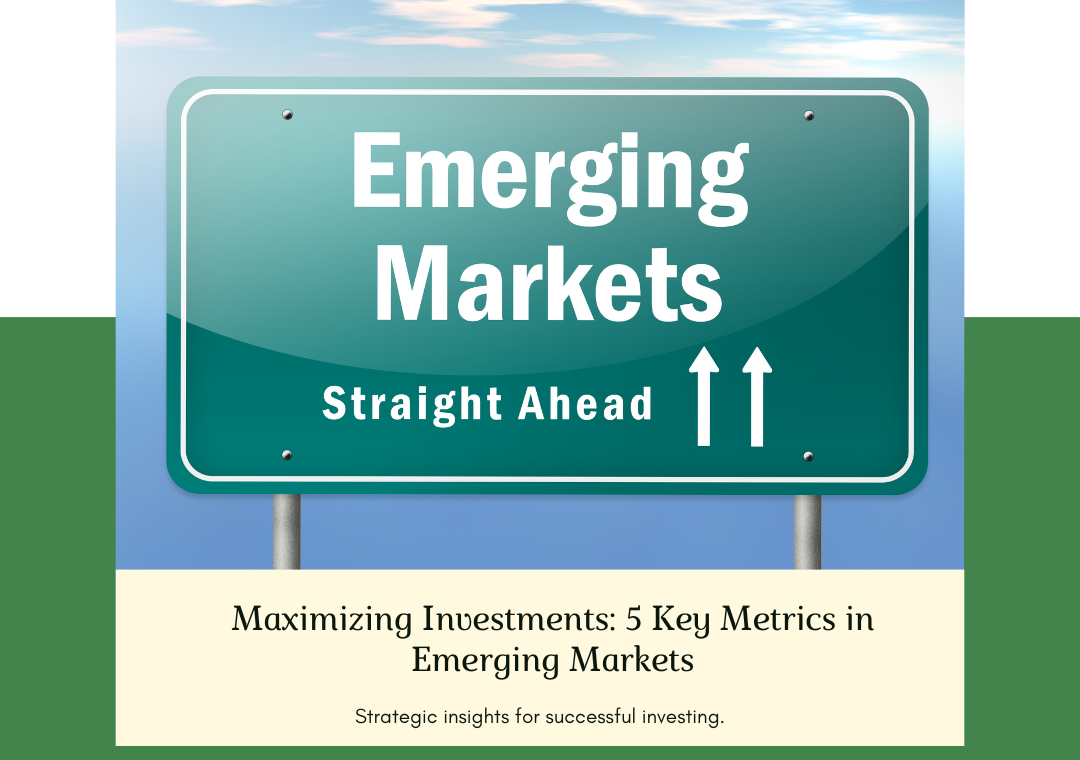How Investors Can Leverage in Emerging Markets?
Investing in emerging markets offers a mix of exciting opportunities and potential challenges. These fast-growing economies can provide substantial returns, but they also carry increased volatility and risk. Successful investment in these areas requires a deep understanding of essential indicators that highlight the economic health, market potential, and specific risks associated with emerging markets. By focusing on these key metrics, investors can make informed decisions and navigate the complexities of emerging economies more effectively.
Here are five critical metrics that investors can leverage to make informed decisions in emerging markets.
Understanding Gross Domestic Product GDP Growth Rate
The GDP growth rate is a fundamental indicator of economic performance. It measures the increase in the value of all goods and services produced by an economy over a specific period. For emerging markets, a high GDP growth rate often signals robust economic expansion and increased opportunities for investment.
How Investors Can Use GDP Growth
– Market Potential A high GDP growth rate suggests a growing market with expanding consumer bases and increased spending power. Investors can target industries poised to benefit from this growth, such as consumer goods, technology, and infrastructure.
– Long-term Trends: By analyzing GDP growth trends, investors can identify which emerging markets are consistently growing, indicating stability and potential for sustained returns.
Understanding Inflation
Inflation measures the rate at which the general level of prices for goods and services is rising. While moderate inflation is normal in a growing economy, hyperinflation or deflation can signal economic instability.
How Investors Can Use Inflation Data
–Cost Management: High inflation can erode purchasing power and increase costs for businesses. Investors should assess how inflation might impact the profitability of their investments.
– Interest Rates: Central banks often adjust interest rates in response to inflation. Rising interest rates can affect borrowing costs and investment returns, particularly in fixed-income securities.
Understanding Currency Stability
Currency stability is crucial for investors, as fluctuations in exchange rates can impact returns. Volatile currencies can increase the risk of investing in foreign markets.
How Investors Can Use Currency Stability Metrics
– Hedging Strategies: Investors can use currency stability data to develop hedging strategies to protect against unfavorable currency movements.
– Cost Analysis: Stable currencies reduce the uncertainty in cost and profit projections, making it easier to forecast returns.
Conclusion
Investing in emerging markets can be highly rewarding, but it requires careful analysis and a deep understanding of various economic indicators. By leveraging metrics such as GDP growth, inflation rate, and currency stability, investors can make more informed decisions and mitigate risks. Staying informed and proactive in monitoring these metrics can help investors capitalize on the dynamic opportunities presented by emerging markets.
Emerging markets are diverse and constantly evolving, so continuous research and adaptability are essential for success. By focusing on these key metrics, investors can enhance their strategies and increase their chances of achieving substantial returns in these promising economies.


